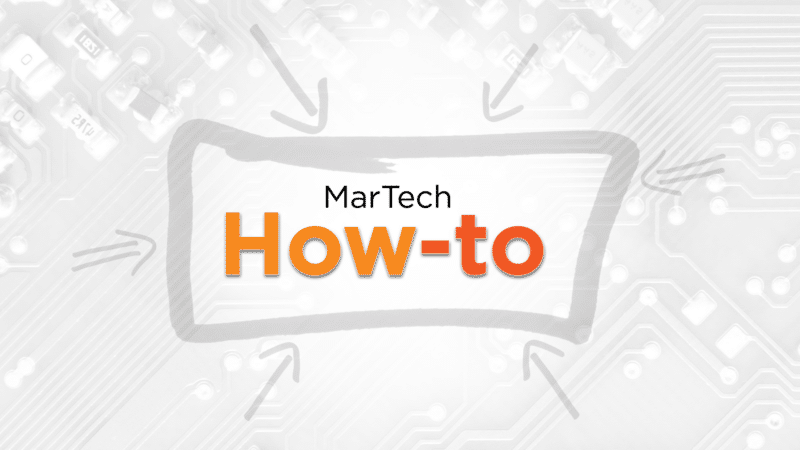AI will soon be able to handle up to 95% of the work currently done by marketing agencies, creative professionals and specialists, according to Sam Altman, CEO of OpenAI. If his prediction holds true, are marketing agencies headed for an extinction event in which some survive but many are wiped out, like the dinosaurs at the end of the Cretaceous period?
The current state of marketing agencies
The global market size of full-service marketing agencies was approximately $287 billion in 2022, with an expected compound annual growth rate (CAGR) of over 9% for the next 10-12 years, according to ResearchNester.
When interviewing agency owners and senior leaders, a more complex picture emerges. The majority of agencies (56%) are entering middle age, which they define as agencies that have been in business for 2-10 years. Per a Vendasta report, they are facing a number of issues:
- Scaling operations while preserving quality.
- Retaining the agility of a startup as the team grows.
- Striving to establish a distinctive identity in a saturated market.
- Avoiding client churn.
- Growth with profitability.
Adding to the situation’s complexity, clients are not entirely satisfied with their agency experiences. Riley Research’s recent survey found that only 14% of clients expressed being “very satisfied” with their agency partners, while 59% were “satisfied” and 28% remained “neutral.” These figures underscore the need for the industry to address client concerns and strive for better client-agency relationships.
In another 2022 survey, “56% [of respondents] said they thought that agencies overpromise and underdeliver and 53% believe their agencies are getting complacent.”
There are three possible future scenarios for agencies, ranging from extinction to nirvana.
Dig deeper: How the big holding companies are handling genAI
The extinction threat scenario
Suppose Altman is right, and 95% of the work being done today by marketing agencies can be done by AI at virtually no cost. In that case, many agencies could go out of business or shrink dramatically. Even if AI takes on just 50% of today’s work, the market will shrink dramatically.
For this extinction event scenario to occur, some mixture of the following happens:
- Agencies are complacent about AI, putting off learning how to use it effectively because the technology is not yet mature.
- Clients learn to use AI to achieve their business goals better and faster than their agency partners.
- Agencies innovate with AI for the wrong reasons.
I would put the probability of the extinction event scenario at only around 20-30%, mainly because I don’t think most agencies will be complacent about AI, and I don’t think most clients will learn how to utilize AI better and faster than their agency partners.
The ‘life gets tough’ scenario
There is a scenario between the extinction event scenario and what I call the AI nirvana scenario. The “life gets tough” scenario is driven by pressure on pricing and profitability caused by AI adoption and client expectations about the use of AI.
Already, many agency service offerings face pricing and profitability pressures. Although it is difficult to generalize because every agency is different, with its own niche and target market, there are some trends.
The same Vendasta report found that 25% of agencies consider websites their most profitable service, followed by content and SEO. In contrast, 38% say paid ads are the least profitable, with social media and reputation management also being less profitable.
Websites are likely to remain highly profitable. AI can speed this up and bring new levels of flexibility, but designing a great website will continue to need the human touch. Agencies will face tough challenges over the next ten years when AI impacts the profitability of two service offerings: content and SEO.
Agencies will suffer if clients learn to use AI to generate all or most of their own content. I think this is less likely because AI, at least at the moment, cannot generate high-quality, original content. But AI will improve and people will get better at using AI to generate interesting content. The real question will be who will do this in the future: clients or agencies?
SEO is already experiencing issues. Google and Bing are fast moving from search engines to answer engines, providing the summarized answers that many people need with zero clicks to the underlying sources of that information. This has the potential to reduce the value of SEO for many organizations and the ability of agencies to charge for SEO services.
On the other hand, users are no longer searching for individual keywords but instead entering complex questions into a chatbot. This may present an opportunity for organizations to build content around these complex questions rather than keywords. SEO will be a mess over the next 3-5 years and it’s hard to see how that leads to profitability for most agencies.
Today’s less profitable offerings — paid ads and social media — are highly likely to be automated by AI and even less profitable than they are today. I would put the probability of the “life gets tough” scenario at 30-40%.
Dig deeper: AI transformation: How to prepare your marketing team
The AI nirvana scenario
Just as the advent of digital advertising led to an explosion of marketing agencies, AI may also lead to an explosion of agency growth. If clients decide they don’t have the time or inclination to learn the intricacies of using AI effectively and outsource AI to agencies, agencies will grow.
Not every agency will grow, however. There will be winners and losers. Here are a few thoughts about how agencies can increase their chances of being among the winners.
- Innovate for the right reasons: Many of the early thought leadership pieces I’m seeing from agencies cluster around two themes: fear of missing out (FOMO) and “Isn’t this cool?” While no one should underestimate FOMO’s motivational power, it will only generate initial interest, not long-term growth and profitability. In a similar vein, clients aren’t going to pay for “Isn’t this cool?” Clients pay for business outcomes. Make sure all of your innovation ties to the client’s KPIs.
- Don’t neglect the soft factors: Many agencies will tend to focus on the technology and how to deploy it. While that’s important, don’t neglect the changes in processes, governance and ethics that come with AI. More AI projects will run aground on these soft factors than fail because the technology didn’t work or wasn’t deployed correctly.
- Be the steady, guiding hand: Clients want someone who understands their business and can help them navigate change. Agencies that can say, “We guided you through the digital revolution and we can help guide you through this AI revolution,” will find a willing audience.
When I started this article, I felt like agencies could be facing an extinction event. But as I thought about it more and realized the possibilities, I realized that the AI nirvana scenario may be the most probable outcome. It is far from guaranteed, and many agencies will not survive the winds of AI change, but those that do will have huge opportunities for growth and profitability.
Dig deeper: AI content creation: Ushering in the unimaginable
Opinions expressed in this article are those of the guest author and not necessarily MarTech. Staff authors are listed here.
Related stories
New on MarTech





